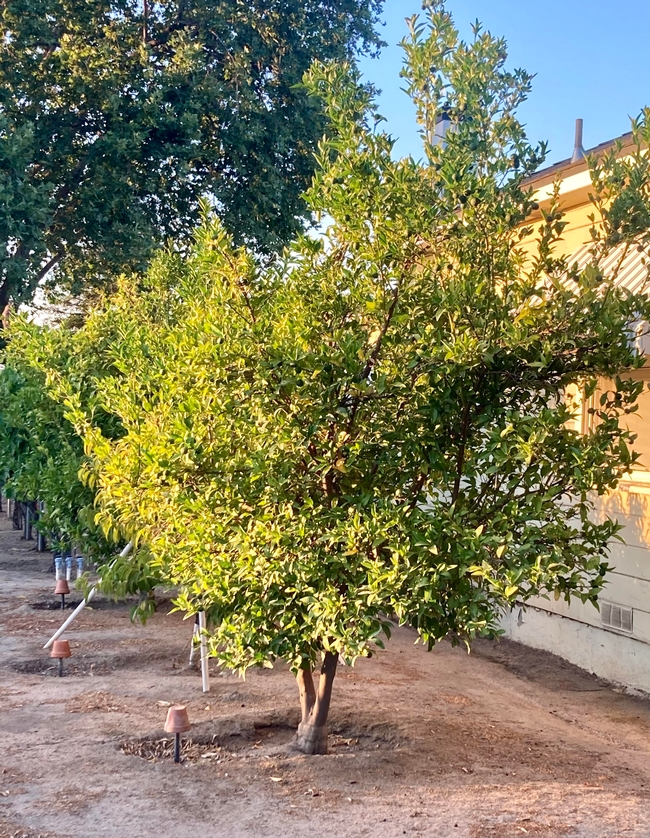
Consecutive weeks of daytime temperatures exceeding 100 degrees and nighttime temperatures remaining in the high 70s have killed many plants and trees and weakened or stunted many others. Determining whether severely heat-stressed plants and trees are dead or dying and whether they have a chance to recover vigor and good health will be a challenge during the next few months. Branch dieback, premature leaf drop, dropping of immature fruits and nuts, dead leaves, blossom drop and flower desiccation as well as yellowed or brown lawn grasses are all signs of severe heat stress as well as drought stress.
Determining the extent of the heat damage this next month will determine whether a plant or tree is salvageable. Dead leaves don't necessarily indicate that a plant has died. Remove dead leaves on flowering annuals and summer vegetables and scratch the stems to check for green tissue underneath the top layer of bark or stem tissue. Green tissue is still alive. Check leaf nodes for swelling which indicates that new leaves are forming at the node.
Keep the soil moist and delay removing plants which show signs of life. They may well recover and begin producing again in late August.
Protection from the scorching sun this month will speed recovery when temperatures cool in fall. Try to provide full shade this month for damaged plants or plants that do not recover easily from wilting. Move container plants into full shade. Place market umbrellas and shade structures where they can provide the most shade and leave them there.
If major structural branches on mature landscape trees and fruit and nut trees are dead, the remaining branch scaffolding may not be strong enough to hold a crop or may create a hazardous imbalance. Branches that have lost their leaves or which still hold crispy brown leaves may look dead but still be alive. Remove any dead branches that can become projectiles during fall storms, but wait until deciduous trees are dormant in mid-winter to restructure branch scaffolding. Continue to deep irrigate trees and bushes into the fall months whenever a heat spike is predicted.
Wait to fertilize all heat-stressed plants and trees until late August when nights will be longer and a little cooler. Deep irrigate before and after fertilization. It will be tempting to feed heat-stressed plants heavily to encourage rapid new growth but feeding at half the recommended rate for the next couple of months will encourage a slow and steady recovery. Apply low-nitrogen fertilizers on landscape plants and bushes and on summer vegetables. Give fruit and nut trees one feeding of a high-nitrogen fertilizer after harvest or in September if there was no crop left to harvest.




